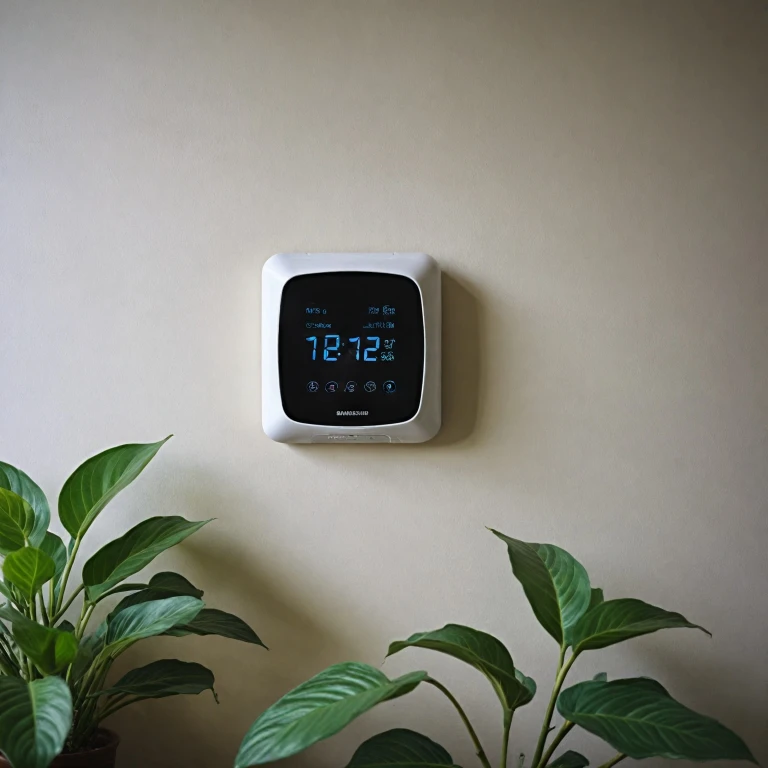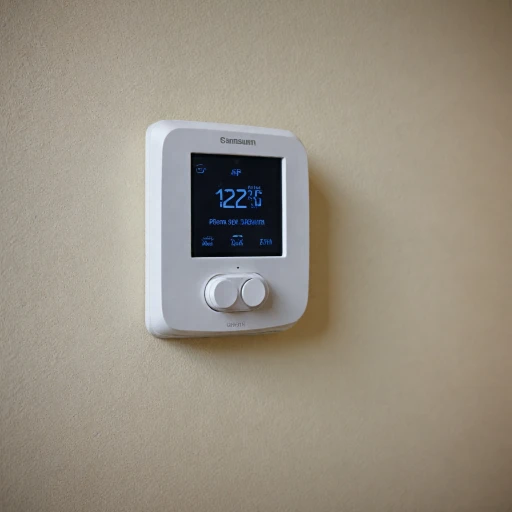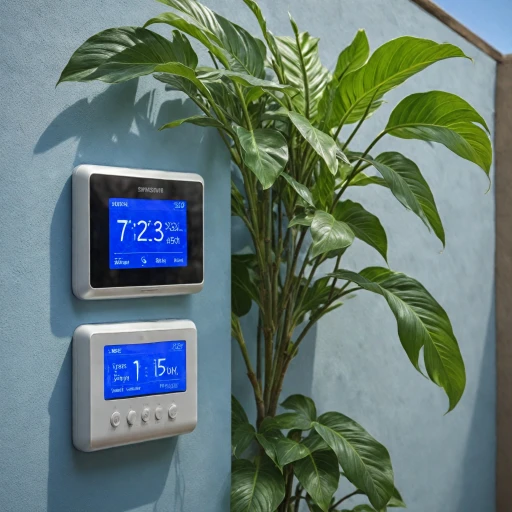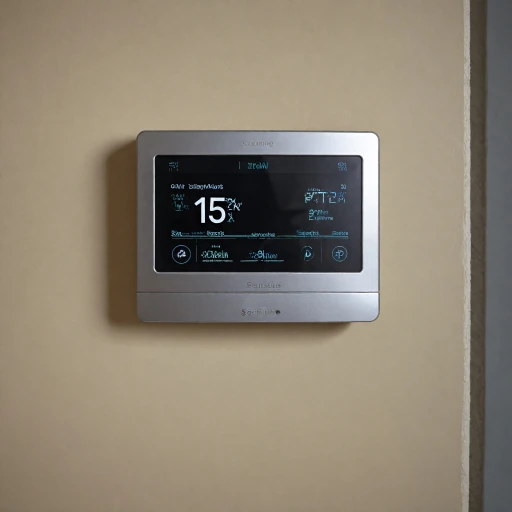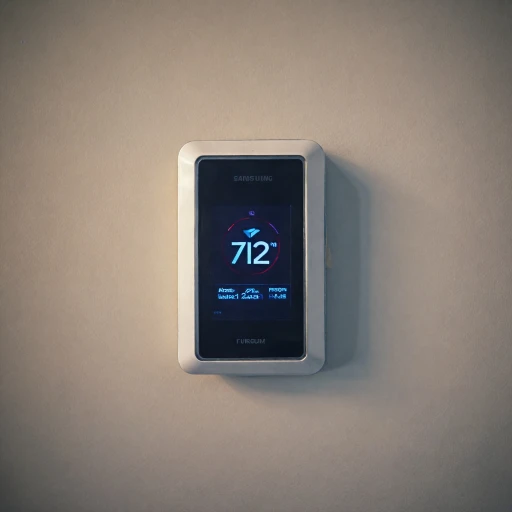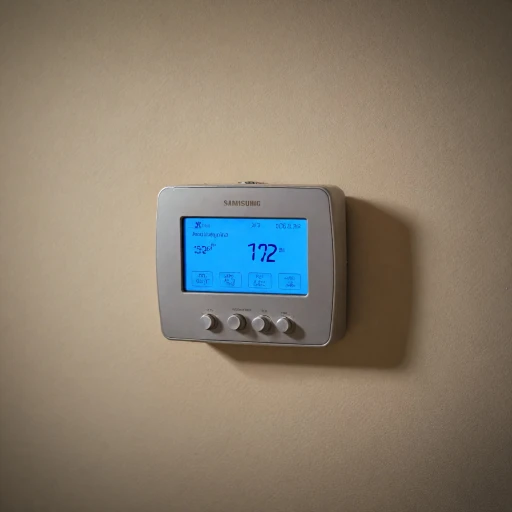Navigating the Braeburn Thermostat Manual
Getting Started with Your Thermostat Manual
The process of setting up and configuring your Braeburn thermostat might initially seem daunting, especially if you're new to smart thermostat systems. However, understanding the basics laid out in the manual is an essential first step.
One of the most important parts of your journey will be familiarizing yourself with the thermostat's installment instructions. The manual often provides a detailed guide that outlines how to properly attach the thermostat to the wall. Ensure that the thermostat's base is securely fastened, and double-check that electrical connections—especially the transformer and dual transformer for advanced functions—are correctly aligned.
When dealing with “heating systems,” especially when a heat pump is involved, the manual explains the configuration settings needed to optimize temperature and mode functions for both single stage and stage heat systems.
Understanding the Settings and Modes
Your Braeburn thermostat user manual can help you navigate various settings and modes effectively. From heating to cooling, the manual breaks down how to set your desired room temperature. You will find sections dedicated to temperature calibration, program adjustments, and volt power compatibility.
The thermostat offers different user options and settings that sync up with your heating cooling preferences. It can also integrate easily with both conventional heat systems and advanced systems provided by Braeburn Systems LLC.
For more insights into understanding the intricacies of handling a line voltage thermostat, you might find it helpful to explore topics around
benefits of line voltage thermostats, given the complexity of modern transformer common systems.
Navigating these fundamental elements featured in the manual will set a strong foundation for your understanding of Braeburn thermostats, leading to a smoother installation and operation experience.
Key Features of Braeburn Thermostats
Unveiling the Prominent Features of Braeburn Thermostats
Braeburn thermostats are renowned for their versatility and user-friendly design, catering to various heating and cooling needs. Their extensive features ensure optimal comfort and energy efficiency. Let's explore these features to better understand how to utilize your thermostat effectively.
- User-Friendly Interface: Braeburn thermostats typically come with easy-to-navigate controls, making the user manual a helpful companion to maximize your control over home temperatures.
- Programmable Settings: These thermostats often support various heating and cooling programs. Users can set personalized schedules to match different lifestyle needs, ensuring comfort while conserving energy.
- System Compatibility: Whether you have a single-stage heat or a sophisticated dual transformer system, Braeburn models are built to accommodate a range of conventional and pump systems.
- Versatile Modes: These thermostats typically offer multiple mode settings, including cool, heat, and auto-changeover, providing flexibility in managing room temperature.
- Energy Efficiency: With features like temperature hold and separate heating and cooling programs, Braeburn thermostats are engineered to boost energy efficiency and reduce your utility bills.
- Installer Settings: During installation, the thermostat allows for specific adjustments to system settings, such as selecting between different heating and cooling options or configuring the transformer common settings.
- Voltage Adaptability: They support a range of power options, from volt power systems to dual transformer configurations, making them highly flexible for diverse household systems.
Understanding these features is an essential step towards optimizing your home’s climate control and enhancing your overall comfort, especially when considering the myriad of
user options available with your thermostat base.
Common Challenges and Solutions
Overcoming Common Obstacles with Braeburn Thermostats
When navigating the journey of thermostat management, users often face similar hurdles. Understanding these challenges and their solutions is key to ensuring a seamless experience.
One frequent issue is incorrect temperature settings. It's vital to regularly check your Braeburn thermostat to ensure that the programmed heat and cooling modes are accurately reflecting your desired room temperature. Adjusting these settings and verifying them against the user manual can correct unexpected fluctuations.
Users might also encounter difficulty with power supply, especially in systems with dual transformer or heat pump integration. Confirm that the thermostat base is securely attached and that all power connections, particularly the transformer common, are intact. Consulting the installation guide can provide clarity on proper installation techniques.
Additionally, for systems with single stage heat or dual transformer configurations, confusion can arise over selecting the appropriate mode. Verify your system's compatibility and settings by referring to the detailed system manual. Ensuring the system is set to ‘heat pump’ or ‘conventional heat’ as intended can often resolve these mode-related challenges.
For those looking to maximize comfort through remote control, having an enhanced understanding of your
Braeburn thermostat manual proves invaluable. Proper education on the user options available will navigate these common stumbling blocks effectively, paving the way for optimal system performance. For a more thorough understanding of advanced features and integrations, the comprehensive user guide can serve as an excellent resource.
By addressing these impediments with structured troubleshooting, you'll not only enhance comfort but also ensure energy efficiency and system longevity. Further insights into energy-smart thermostat use reveal additional benefits.
Maximizing Energy Efficiency
Utilizing Your Thermostat for Optimal Energy Management
When it comes to making your Braeburn thermostat work efficiently, proper scheduling and settings can lead to enhanced energy efficiency. The user manual often outlines these critical steps, but let's dive deeper into some practical strategies that put this knowledge to good use.
- System Settings: Ensure that your thermostat is correctly set to "heat" or "cool" mode based on the current season. This fundamental step helps your HVAC system operate as intended, whether it's a conventional heat system or a heat pump.
- Temperature Schedule: Take advantage of the programmable features in Braeburn thermostats. You can create a schedule that aligns with your daily routine, allowing the thermostat to lower temperatures when the house is unoccupied or at night, thus saving energy.
- Adjustable Options: Understanding your thermostat's heating and cooling settings is crucial. The manual details how to set the room temperature to different preferences at different times, making it adaptable to your needs.
- Voltage Systems: Make sure your thermostat base is connected to the correct volt power setup, whether it’s a dual transformer or a single stage. This can substantially affect how your system performs, especially in terms of energy consumption.
- Installer Settings: During installation, checking the settings adjusted by the installer is vital. This could include ensuring the thermostat is programmed to the correct stage heat or pump systems.
- Transformers: A common issue affecting energy efficiency involves the transformer. Understanding whether your system utilizes a transformer common or a dual transformer can help troubleshoot potential inefficiencies.
By ensuring that these basic settings in your Braeburn thermostat are accurately configured, you can achieve a more energy-efficient home environment. Additionally, it’s essential to periodically review and adjust these settings as needed to accommodate changes in seasons or lifestyle."}
Troubleshooting Tips
Solving Common Issues with Your Braeburn Thermostat
When troubleshooting your Braeburn thermostat, having a comprehensive grasp of its features and functionality can significantly alleviate frustrations. Here are a few key areas where challenges might arise, along with their solutions:
- Temperature Variations: If your room temperature doesn’t match the thermostat setting, first verify if the thermostat base is securely attached. Ensure that it’s firmly mounted on the wall without any loose wires. A quick check of the thermostat’s user settings can confirm it is in the appropriate mode, whether it's for heating or cooling.
- Inconsistent Heating and Cooling: Systems like heat pump or conventional heat might require specific configurations in the user manual. Always confirm that the thermostat is set to the right program, especially when a dual transformer system, like a single stage heat and cooling system, is involved.
- No Power or Display Issues: Sometimes a thermostat may not turn on due to transformer common misunderstandings. Verify the volt power supply and transformer connections. The transformer should supply the correct power needed for operation. This check could be crucial for ensuring that the installer followed the recommended installation procedures.
To improve accuracy and enhance energy efficiency, make sure your temperature settings align with the needs of your household. Regular maintenance and prompt resolution of minor issues can prevent them from becoming larger problems, ensuring your Braeburn system functions optimally. If you experience persistent issues, consulting the manual or reaching out to Braeburn Systems LLC might be your next best step.
Integrating Braeburn with Smart Home Systems
Streamlining Smart Home Integration with Your Thermostat
Integrating your Braeburn thermostat with a smart home system can seem daunting, but with a bit of patience and the right information, it can significantly streamline your climate control. The thermostat Braeburn offers a variety of user options to ensure a seamless connection with other smart devices.
- First, verify that your Braeburn system is compatible with your existing smart home network. This includes checking for compatibility with platforms such as Google Home or Alexa.
- Review the user manual to find the specific settings required to connect the thermostat to your Wi-Fi network. This is crucial for allowing remote access and control through a mobile app.
- Make sure the dual transformer configuration of your heating and cooling system aligns with the smart hub's requirements. Some systems may require adjustments at the thermostat base for full integration.
Moreover, setting your Braeburn thermostat to work with a smart home system enhances energy efficiency by dynamically adjusting room temperature based on occupancy and preferences set in your program. Whether you are configuring single stage heating or a conventional heat system, the installer manual will provide step-by-step guidance to ensure successful setup.
Don't forget the benefit of establishing automated modes for your thermostat, such as a heat cool setting that can automatically switch between heating and cooling as needed. This not only maximizes comfort but can also lead to significant energy savings over time.
For any issues that arise during integration, revisit your manual Braeburn. It often includes troubleshooting tips for common challenges, ensuring that you can tackle installation difficulties head-on. Additionally, this technology empowers users to adjust settings remotely, offering better control over your home's climate even when you're not there.
Remember, not all pump systems or transformer setups are the same, so individualized adjustments may be required, especially for advanced heat pump configurations or volt power adjustments.
